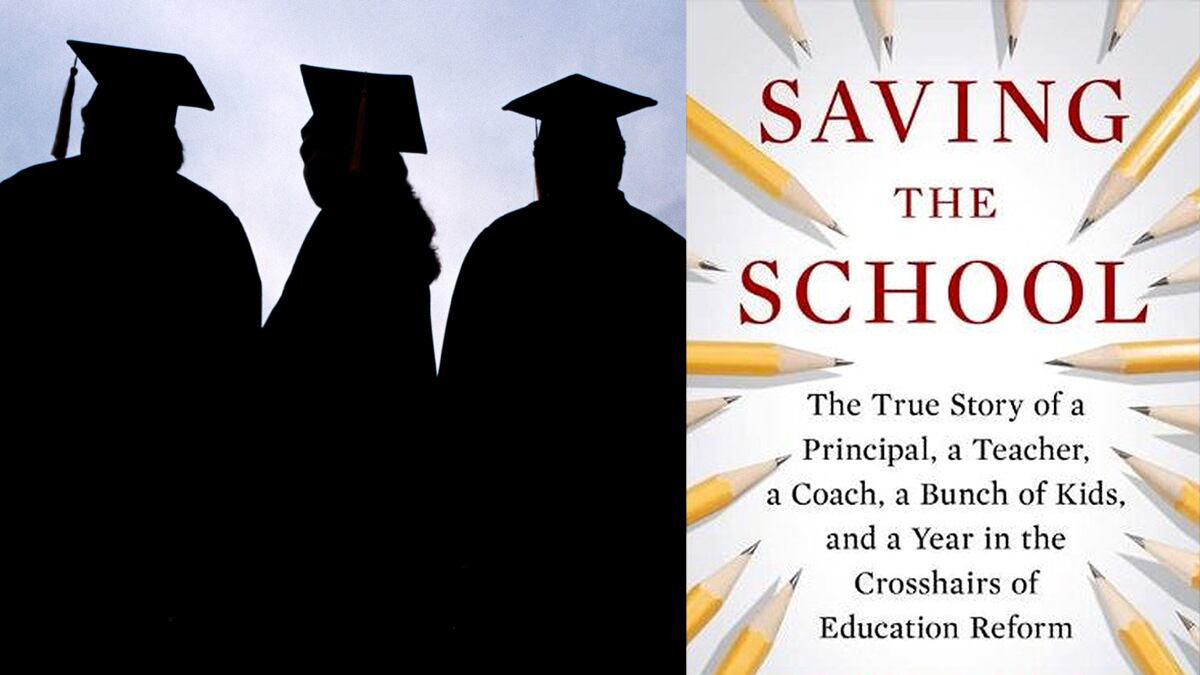What can a book about a year in the life of a single school—a timeworn genre—tell us about the pressures facing the uneven, chaotic, increasingly data-driven American public education system? If that book is Michael Brick’s Saving the School, the answer is, quite a lot—as long as you’re willing to slog through a few too many play-by-plays of high school basketball games.
Brick, who worked for The New York Times, spent a year embedded at John H. Reagan High School in “the Two-Three,” a poor neighborhood on the eastside of Austin, Texas, known for tensions between black and Hispanic residents. Of the school’s approximately 700 students, 110 are teen parents, and only 22 are white. Over a third of Reagan students are classified as still learning the English language, and over 80 percent are so poor that the government pays for their school lunch. When a girl refuses to remove her hat during a school assembly, she is handcuffed and dragged out by the police. Military recruiters roam Reagan’s halls.
Brick has done his homework on the history of American education, and he accurately assesses why schools like Reagan often appear to be such blighted places: less because their teachers are uniformly uncaring or their students unmotivated than because so many impoverished schools have become, over the past 30 years, increasingly cut off from the mainstream of American society, situated in neighborhoods victimized by white and middle-class flight; asked to compete with charter schools; and then left to educate a greater proportion of poor, special education, and non-English speaking students than the public school system at large. Reagan High is a good stand-in for the approximately 1,700 high schools across the country that are classified by the Obama administration as “persistently failing.” They are also sometimes known as “drop-out factories:” schools where more than half of the freshman class never graduates.
As the book opens in September 2009, principal Anabel Garza faces a stark mandate from Austin’s new superintendent, a “standards-and-accountability” reformer named Meria Carstarphen: raise state test scores or else Reagan, once the pride of its neighborhood, will be shut down, or handed over to a private management company from out-of-town. (Carstarphen also seems to hold Garza accountable for the suggestive animal-print dresses several young women wear to school on the day she visits for a media photo op. Garza, the book’s heroine, weathers the absurdities of her job with admirable humor. “I didn’t dress them,” she quips at a faculty meeting.)
The superintendent’s threat to close Reagan results in a flurry of manic test-prep, but also, quite movingly, in the community uniting behind its supposedly “failing” school, proving that the raw numbers of education reform never tell the full story of what goes on within any classroom, let alone in the neighborhood that hosts it.

Reagan’s star chemistry teacher, a young, born-again Christian named Candice, doesn’t hesitate to proselytize to her public-school students. This would be more disturbing if Candice weren’t so obviously a force of tremendous good in her students’ lives, taking them out for coffee and leading them in a Bible study group that is really more like a therapy session for kids growing up tough—often with absentee fathers, drug-addicted family members, and way too little money. Candice’s life changed when she visited Africa on a volunteer mission, so she raises money for a few of her students, most of whom have never left Texas, to take the same kind of trip over their summer break.
Meanwhile, principal Garza and her staff circle the neighborhood in a GPS-equipped van, rousing absentee kids from their beds in order to get them to school. When immigrant parents tell Reagan administrators that their kids need to drop out and work in order to put food on the table, the school enrolls the students in a special program that allows them to study part-time while maintaining a paid job. Reagan’s basketball coach teaches his team how to present themselves professionally in a college financial aid office. A local church group sets up a clinic one Saturday in the school parking lot, and hundreds of people wait in line for hours to see a dental hygienist, domestic violence counselor, or nurse. “The whole scene looked like a temporary fairground of basics taken for granted across the highway,” Brick observes.
This poignant episode conveys the dilemma facing many struggling schools in poor neighborhoods, including schools from which I have reported, in Central Falls, Rhode Island and South Los Angeles. Social deprivation truly does impair academic achievement and yet, education reformers have rightfully demanded that poverty not be used as an excuse for failing schools. The wise teacher or principal, therefore, can’t really ignore poverty. Instead, he or she must look for ways to mitigate it, both within and outside the classroom. In this climate, the job of an educator becomes monumentally difficult, encompassing social work, psychology, and health care—all on top of the task of imparting knowledge to young minds.
In the end—spoiler alert—Garza and her teachers succeed in raising Reagan’s test scores, and the school remains open. The beauty of Saving the School is that Brick puts this proud achievement in its proper context: as a marginal good in a sea of severe social challenges, one that may or may not help Reagan’s students go to college, get a decent job, or escape the poverty into which they were born.






